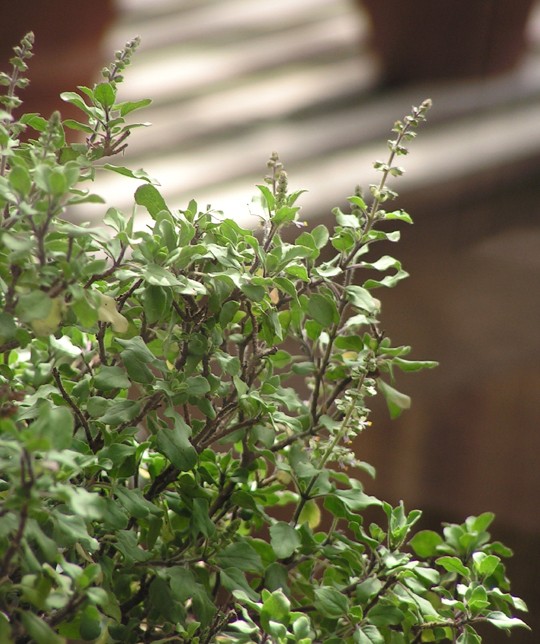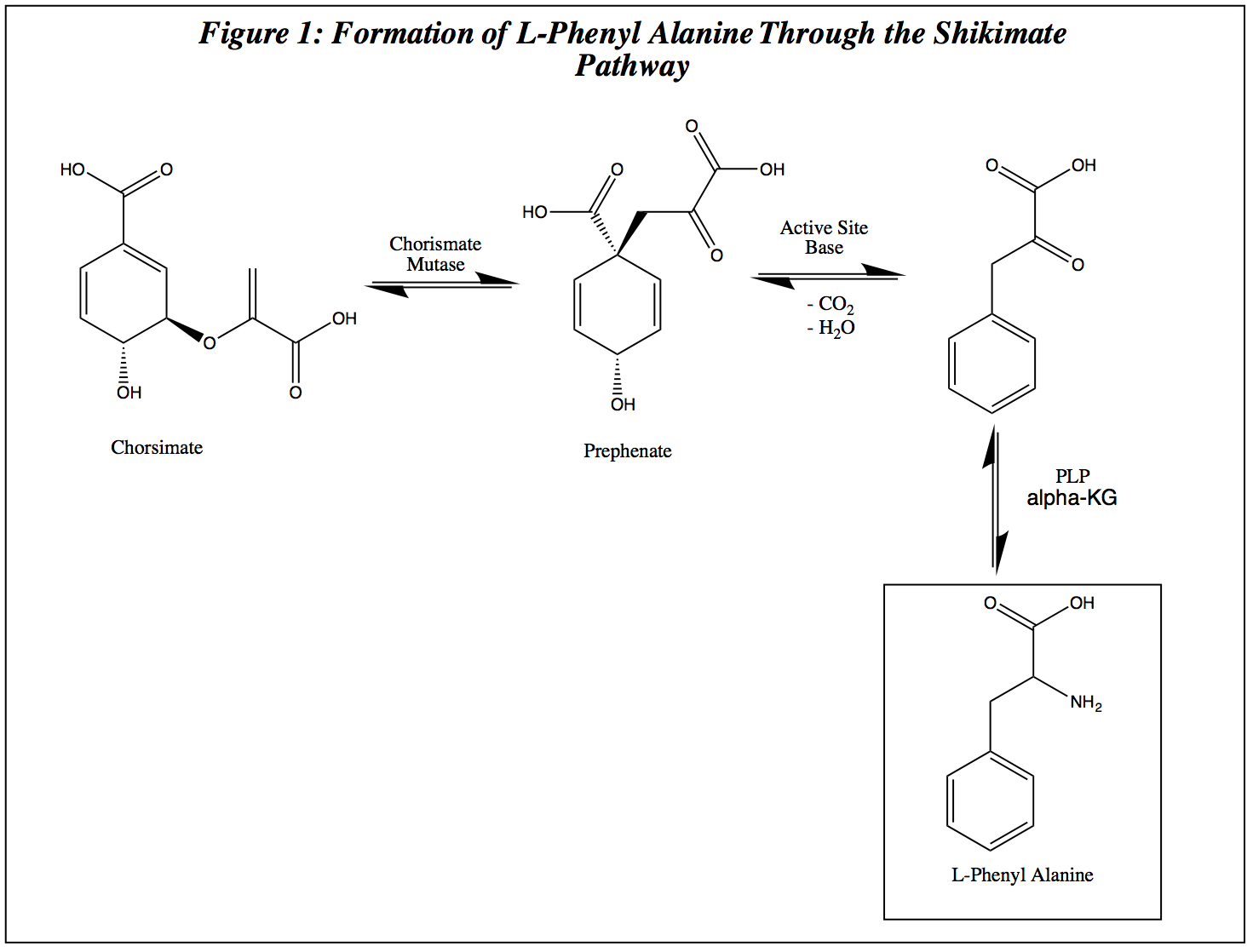|
African Blue Basil
African blue basil (''Ocimum kilimandscharicum'' × ''basilicum'' ' Dark Opal') is a hybrid basil variety, a cross between camphor basil and dark opal basil. It is one of a few types of basil that are perennial. African blue basil plants are sterile, unable to produce seeds of their own, and can only be propagated by cuttings. This particular breed of basil has a strong camphor scent, inherited from ''Ocimum kilimandscharicum'' (camphor basil), Gives as its source ''Econ Bot'' 28:63 (1974). its East African parent. The concentration of camphor is 22% (compared with 61% for ''O. kilimandscharicum''). The concentration of the other major aroma compounds, linalool (55%), and 1,8-cineole (15%) is comparable to many basil cultivars."Basil: A Source of Aroma Compounds and a Popular Culinary and Ornamental Herb" reprinted from: ''Perspectives on new crops and new uses'' (1999), ASHS Press, Alexandria, VA, . All parts of the flower, leaves and stems are edible; although some might fin ... [...More Info...] [...Related Items...] OR: [Wikipedia] [Google] [Baidu] |
Ocimum Kilimandscharicum
''Ocimum kilimandscharicum'', also known as camphor basil, is a Ocimum, basil species native to Kenya, Tanzania, Uganda, Sudan, and Ethiopia. References Ocimum, kilimandscharicum Herbs Flora of Ethiopia Flora of Kenya Flora of Sudan Flora of Tanzania Flora of Uganda Garden plants Plants described in 1895 {{Lamiaceae-stub ... [...More Info...] [...Related Items...] OR: [Wikipedia] [Google] [Baidu] |
Econ Bot
''Economic Botany'' is a quarterly peer-reviewed academic journal that covers all aspects of economic botany. The editor-in-chief is Robert A. Voeks (California State University, Fullerton). The journal was established in 1947 and is published by Springer Science+Business Media and the New York Botanical Garden Press on behalf of the Society for Economic Botany. Authors have a choice to publish articles under the traditional subscription model or an Open Access model. Abstracting and indexing The journal is abstracted and indexed in: According to the ''Journal Citation Reports'', the journal has a 2020 impact factor The impact factor (IF) or journal impact factor (JIF) of an academic journal is a scientometric index calculated by Clarivate that reflects the yearly mean number of citations of articles published in the last two years in a given journal, as i ... of 1.731. References External links *{{Official website, http://www.nybgpress.org/Products/CategoryCenter/JL!ECO ... [...More Info...] [...Related Items...] OR: [Wikipedia] [Google] [Baidu] |
List Of Basil Cultivars
Basil cultivars are cultivated varieties of basil. They are used in a variety of ways: as culinary herbs, landscape plants, healing herbs, teas, and worship implements. All true basils are species of the genus ''Ocimum''. The genus is particularly diverse, and includes annuals, non-woody perennials and shrubs native to Africa and other tropical and subtropical regions of the Old and New World. Although it is estimated that there are 50 to 150 species of basil, most, but not all, culinary basils are cultivars of ''O. basilicum'', or sweet basil. Some are cultivars of other basil species, and others are hybrids. It is particularly challenging to determine which species a basil belongs to. This is because basil cross-breeds easily, and drawing boundaries between species is particularly difficult. In fact, recent studies have led to reclassification of some portions of the genus. Basil cultivars vary in several ways. Visually, the size and shape of the leaves varies greatly, from t ... [...More Info...] [...Related Items...] OR: [Wikipedia] [Google] [Baidu] |
Peonidin
Peonidin is an O-methylated anthocyanidin derived from Cyanidin, and a primary plant pigment. Peonidin gives purplish-red hues to flowers such as the peony, from which it takes its name, and roses. It is also present in some blue flowers, such as the morning glory. Like most anthocyanidins, it is pH sensitive, and changes from red to blue as pH rises because anthocyanidins are highly conjugated chromophores. When the pH is changed, the extent of the conjugation (of the double bonds) is altered, which alters the wavelength of light energy absorbed by the molecule. (Natural anthocyanidins are most stable in a very low pH environment; at pH 8.0, most become colorless.) At pH 2.0, peonidin is cherry red; at 3.0 a strong yellowish pink; at 5.0 it is grape red-purple; and at 8.0 it becomes deep blue; unlike many anthocyanidins, however, it is stable at higher pH, and has been isolated as a blue colorant from the brilliant "Heavenly Blue" morning glory (''Ipomoea tricolor Cav cv''). B ... [...More Info...] [...Related Items...] OR: [Wikipedia] [Google] [Baidu] |
Cyanidin
Cyanidin is a natural organic compound. It is a particular type of anthocyanidin (glycoside version called anthocyanins). It is a pigment found in many red berries including grapes, bilberry, blackberry, blueberry, cherry, chokeberry, cranberry, elderberry, hawthorn, loganberry, açai berry and raspberry. It can also be found in other fruits such as apples and plums, and in red cabbage and red onion. It has a characteristic reddish-purple color, though this can change with pH; solutions of the compound are red at pH 11. In certain fruits, the highest concentrations of cyanidin are found in the seeds and skin. Cyanidin has been found to be a potent sirtuin 6 (SIRT6) activator. List of cyanidin derivatives * Antirrhinin (cyanidin-3-rutinoside or 3-C-R), found in black raspberry * Cyanidin-3-xylosylrutinoside, found in black raspberry * Cyanidin-3,4′-di-''O''-β-glucopyranoside, found in red onion * Cyanidin-4′-''O''-β-glucoside, found in red onion * Chrysanthemin ( ... [...More Info...] [...Related Items...] OR: [Wikipedia] [Google] [Baidu] |
Anthocyanin
Anthocyanins (), also called anthocyans, are water-soluble vacuolar pigments that, depending on their pH, may appear red, purple, blue, or black. In 1835, the German pharmacist Ludwig Clamor Marquart gave the name Anthokyan to a chemical compound that gives flowers a blue color for the first time in his treatise "''Die Farben der Blüthen''". Food plants rich in anthocyanins include the blueberry, raspberry, black rice, and black soybean, among many others that are red, blue, purple, or black. Some of the colors of autumn leaves are derived from anthocyanins. Anthocyanins belong to a parent class of molecules called flavonoids synthesized via the phenylpropanoid pathway. They occur in all tissues of higher plants, including leaves, stems, roots, flowers, and fruits. Anthocyanins are derived from anthocyanidins by adding sugars. They are odorless and moderately astringent. Although approved as food and beverage colorant in the European Union, anthocyanins are not approved ... [...More Info...] [...Related Items...] OR: [Wikipedia] [Google] [Baidu] |
1,8-cineole
Eucalyptol is a monoterpenoid. A colorless liquid, it is a bicyclic ether. Eucalyptol has a fresh mint-like smell and a spicy, cooling taste. It is insoluble in water, but miscible with organic solvents. Eucalyptol makes up ~70% - 90% of eucalyptus oil. Eucalyptol forms crystalline adducts with hydrohalic acids, ''o''-cresol, resorcinol, and phosphoric acid. Formation of these adducts is useful for purification. In 1870, F. S. Cloez identified and ascribed the name "eucalyptol" to the dominant portion of ''Eucalyptus globulus'' oil. Uses Because of its pleasant, spicy aroma and taste, eucalyptol is used in flavorings, fragrances, and cosmetics. Cineole-based eucalyptus oil is used as a flavouring at low levels (0.002%) in various products, including baked goods, confectionery, meat products, and beverages. In a 1994 report released by five top cigarette companies, eucalyptol was listed as one of the 599 additives to cigarettes. It is claimed to be added to improve the f ... [...More Info...] [...Related Items...] OR: [Wikipedia] [Google] [Baidu] |
Linalool
Linalool () refers to two enantiomers of a naturally occurring terpene alcohol found in many flowers and spice plants. Linalool has multiple commercial applications, the majority of which are based on its pleasant scent (floral, with a touch of spiciness). A colorless oil, linalool is classified as an acyclic monoterpenoid. In plants, it is a metabolite, a volatile oil component, an antimicrobial agent, and an aroma compound. Linalool has uses in manufacturing of soaps, fragrances, food additives as flavors, household products, and insecticides. Esters of linalool are referred to as linalyl, e.g. linalyl pyrophosphate, an isomer of geranyl pyrophosphate. The word ''linalool'' is based on '' linaloe'' (a type of wood) and the suffix '. In food manufacturing, it may be called ''coriandrol''. Occurrence Both enantiomeric forms are found in nature: (''S'')-linalool is found, for example, as a major constituent of the essential oils of coriander (''Coriandrum sativum'' L.), cymbopo ... [...More Info...] [...Related Items...] OR: [Wikipedia] [Google] [Baidu] |
Camphor
Camphor () is a waxy, colorless solid with a strong aroma. It is classified as a terpenoid and a cyclic ketone. It is found in the wood of the camphor laurel ('' Cinnamomum camphora''), a large evergreen tree found in East Asia; and in the kapur tree ( ''Dryobalanops'' sp.), a tall timber tree from South East Asia. It also occurs in some other related trees in the laurel family, notably '' Ocotea usambarensis''. Rosemary leaves (''Rosmarinus officinalis'') contain 0.05 to 0.5% camphor, while camphorweed (''Heterotheca'') contains some 5%. A major source of camphor in Asia is camphor basil (the parent of African blue basil). Camphor can also be synthetically produced from oil of turpentine. The compound is chiral, existing in two possible enantiomers as shown in the structural diagrams. The structure on the left is the naturally occurring (+)-camphor ((1''R'',4''R'')-bornan-2-one), while its mirror image shown on the right is the (−)-camphor ((1''S'',4''S'')-bornan-2-one). ... [...More Info...] [...Related Items...] OR: [Wikipedia] [Google] [Baidu] |
Ocimum Basilicum
Basil (, ; ''Ocimum basilicum'' , also called great basil, is a culinary herb of the family Lamiaceae (mints). It is a tender plant, and is used in cuisines worldwide. In Western cuisine, the generic term "basil" refers to the variety also known as sweet basil or Genovese basil. Basil is native to tropical regions from Central Africa to Southeast Asia. In temperate climates basil is treated as an annual plant, however, basil can be grown as a short-lived perennial or biennial in warmer horticultural zones with tropical or Mediterranean climates. There are many varieties of basil including sweet basil, Thai basil (''O. basilicum'' var. ''thyrsiflora''), and Mrs. Burns' Lemon (''O. basilicum var. citriodora''). ''O. basilicum'' can cross-pollinate with other species of the ''Ocimum'' genus, producing hybrids such as lemon basil (''O. × citriodorum'') and African blue basil (''O. × kilimandscharicum''). Etymology The name "basil" comes from the Latin , and the Greek (), m ... [...More Info...] [...Related Items...] OR: [Wikipedia] [Google] [Baidu] |
Cutting (plant) A plant cutting is a piece of a plant that is used in horticulture for vegetative (asexual) propagation. A piece of the stem or root of the source plant is placed in a suitable medium such as moist soil. If the conditions are suitable, the plant piece will begin to grow as a new plant independent of the parent, a process known as striking. A stem cutting produces new roots, and a root cutting produces new stems. Some plants can be grown from leaf pieces, called leaf cuttings, which produce both stems and roots. The scions used in grafting are also called cuttings. Propagating plants from cuttings is an ancient form of cloning. There are several advantages of cuttings, mainly that the produced offspring are practically clones of their parent plants. If a plant has favorable traits, it can continue to pass down its advantageous genetic information to its offspring. This is especially economically advantageous as it allows commercial growers to clone a certain plant to ensure consis ... [...More Info...] [...Related Items...] OR: |





